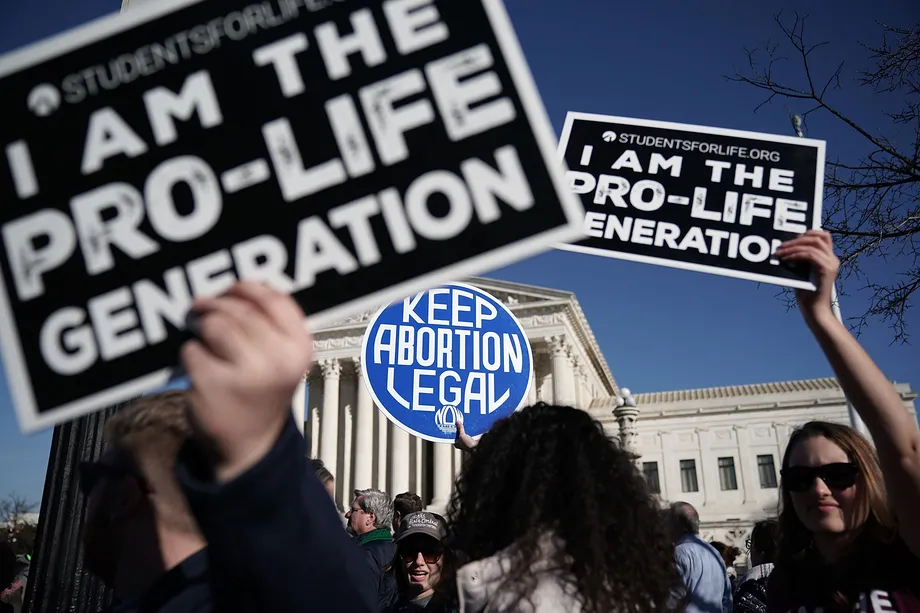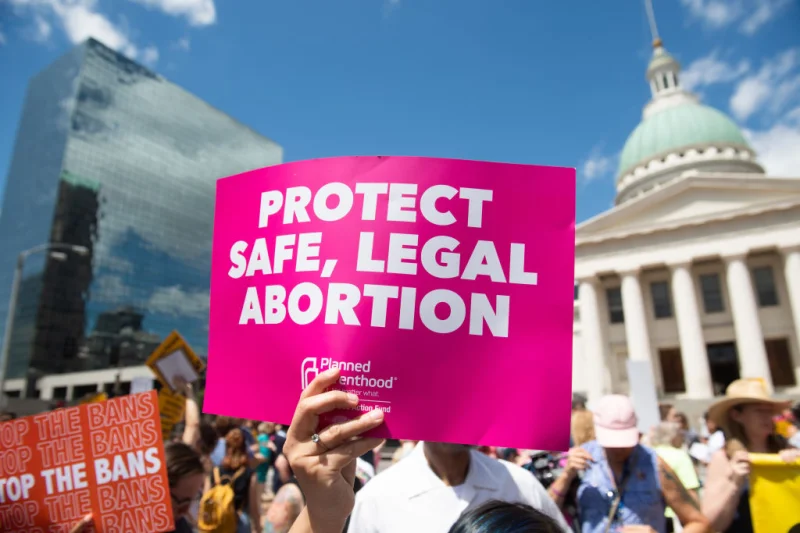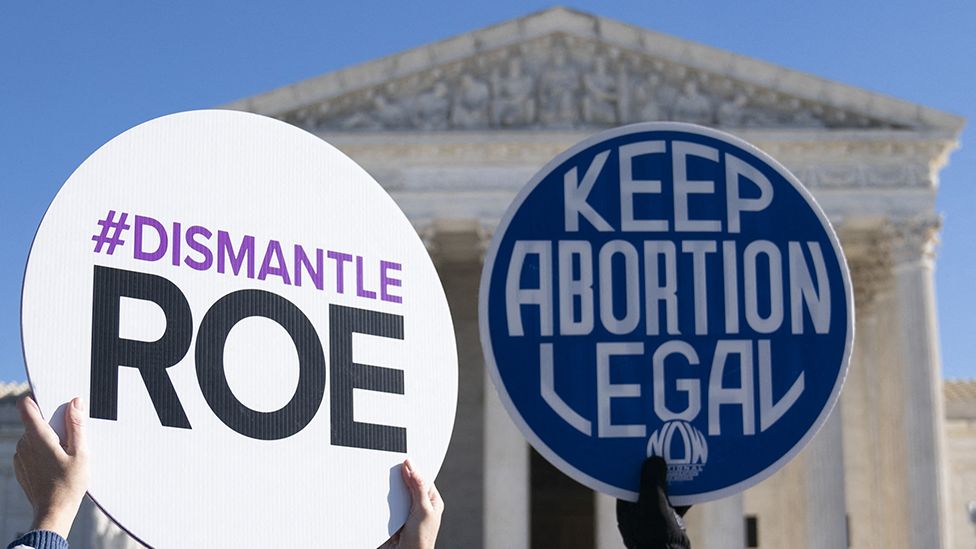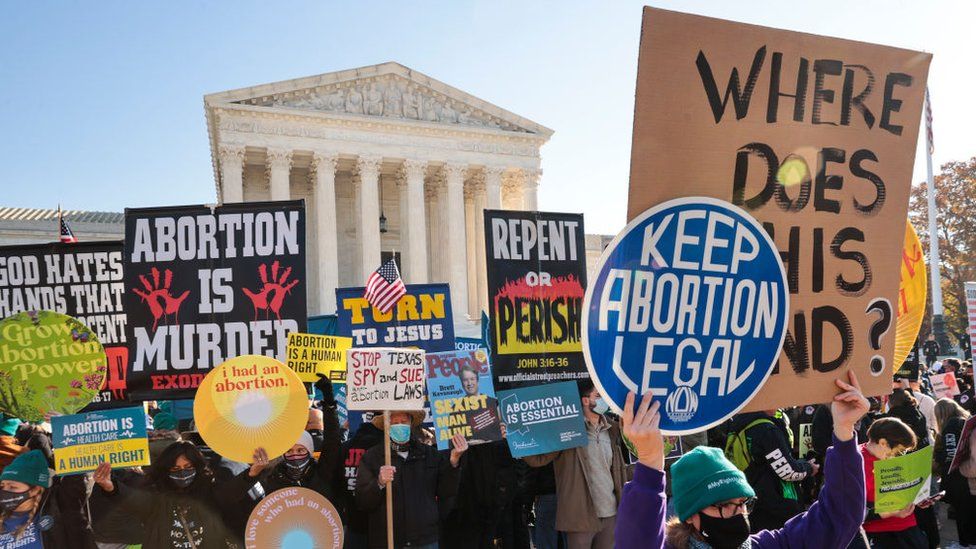By Anna Tsekani,
Abortions are one of the thorniest issues that have been influencing and shaping the United States of America for decades, from its citizens to its governments. In 1973, the U.S. Supreme Court made the landmark decision to protect women’s right to have an abortion on a federal level. However, despite this, recently the U.S. Supreme Court officially reversed Roe v. Wade, declaring that the constitutional right to abortion no longer exists.
The issue of abortion in America has its roots almost two centuries ago, as early as the 1820s and 1830s, the abortion issue in America came off to a rocky start. Narcotic drugs were involved in the early days of abortions in the United States, which many women used in their attempt to abort the embryo in the event of an undesired pregnancy. Women were driven to this decision, as many doctors at the time refused to provide single mothers with the option of abortion since premarital relationships were strongly discouraged.
Because of this, the American Medical Association (AMA) called for the criminalization of abortion. The AMA quickly made abortion a criminal offense, without any regard whatsoever to the circumstances, under which the pregnancy had occurred. The only “extenuating circumstance” which was granted was where the life of the mother-to-be was in danger.
The AMA condemned any procedure that interrupts the further development of the fetus, based on the fact that a woman’s traditional role is to procreate and to take care of her family and children. Another argument pointed out was that legalizing abortion could create problems for America’s genetic stock, as seemingly healthy and strong women might choose to abort the fetus. Practically, the doctors were worried about the competition that existed and maximizing their profits, since it bothered them that midwives and other competitors had more customers than they did.
In 1869, the Catholic Church also came out against abortion and its legalization at any stage of pregnancy, and in 1873 Congress took a partial position on the issue, according to which the sale of contraceptives and general pharmaceutical preparations can lead to a voluntary abortion is considered illegal. This campaign by the American Medical Association could be said to have achieved its goal by 1880. The exception was in extremely rare cases where the woman’s life was truly in danger.

In reality, however, this did not stop many women from undergoing illegal abortion procedures. Many doctors and hospitals did not follow the letter of the law and carried out abortions regardless of the relevant legislation, while at the same time prosecutors were using the law unevenly and unpredictably.
The biggest argument of abortion ban supporters was the preservation of a woman’s life. However, as the years went by, and even in the 1930s and 1940s, this began to change. The disciplines of obstetrics and gynecology had already begun to evolve, and, as a result, the basic argument against abortion became untenable. Some doctors began to question whether the law was ultimately succeeding in preserving a woman’s life or it was ultimately bringing even more negative consequences for her.
Slowly but surely, there was an immediate mobilization, and the issue quickly became huge, with many states taking a stand on the issue. By 1960, states from California to Georgia had begun to vote in favor of the ALI Act standard. Many feminist movements also became active in this struggle, demanding a universal ban on any kind of restriction on the issue, as well as population control movements, according to which through abortion there would be control and perhaps population reduction.

Up until the catalytic abortion law, Roe v. Wade, a number of repeals of existing laws intervened. In 1965 the Supreme Court struck down a Connecticut law that prohibited already married couples from using birth control, based on each person’s right to privacy. In 1972, the Supreme Court also struck down a Massachusetts law, Eisenstadt v. Baird, which involved the sale of contraceptive drugs to married but not unmarried couples. All of this was a precursor to the Roe v. Wade law that was to follow.
The occasion for the American community to be brought to the catalyst of Roe v. Wade was the case of 21-year-old Norma McCorvey from Texas. The young girl found out that she was pregnant for the third time, but for her own reasons, she wanted to terminate the pregnancy. Because of the relevant abortion ban legislation, her acquaintances and friends advised her to falsely claim that she had been raped, even though the specific Texas abortion law gave no extenuating circumstances to women, even if they had been victims of rape or incest had taken place. As luck would have it, a 25-year-old lawyer, Sarah Weddington, who had also undergone a related abortion a few years earlier, was in her way. Weddington, along with lawyer Linda Coffee, threw themselves into the fight to legalize abortion.
After winning this court case, they declared that the abortion law in force at the time was completely unconstitutional, even though it allowed abortion only in cases where the life of the future mother was in danger. This statement succeeded in attracting the attention first of the Texas district court, where it agreed that the law was contrary to the constitutional rights of man, and then it went all the way to the Supreme Court.
So, in January 1973, the landmark Roe v. Wade decision was handed down, whereby in America safe and legal abortion is now a constitutional right for women. Roe v. Wade was one of the most important decisions in America concerning women’s rights. According to it, women had the right to privacy and the right to choose whether to have an abortion or not. However, what many people did not expect was the fact that the law gave a lot of rights to the medical community. In short, the court ruled that until the 3rd month of pregnancy, states could not get involved in the abortion issue, but it would be at the personal discretion of the pregnant woman’s doctor.

Roe was something unprecedented and radical for the American community, as it absolutely rejected that the fetus had rights before birth and held that the term person could be constitutionally granted after birth, not at the moment of conception. However, after all these years of discussion and protesting for the right to self-determination, we are starting from scratch as the Supreme Court reversed Roe v. Wade declaring the existence of the constitutional right to abortion. In other words, abortion rights will be rolled back in plenty of the states immediately, with more restrictions likely to follow, depending on a potential unwanted pregnancy on the blind hand of fortune.
References
- “Will 2020 be the year abortion is banned in the US?”, theguardian.com, Available here
- “Arguments in favour of abortion”, bbc.co.uk, Available here
- “What’s going on in the fight over US abortion rights?”, bbc.com, Available here
- Roe v. Wade, history.com, Available here
- “How women’s lives were different before Roe v. Wade”, washingtonpost.com, Available here
- “Supreme Court overturns Roe v. Wade, ending right to abortion upheld for decades”, npr.com, Available here




